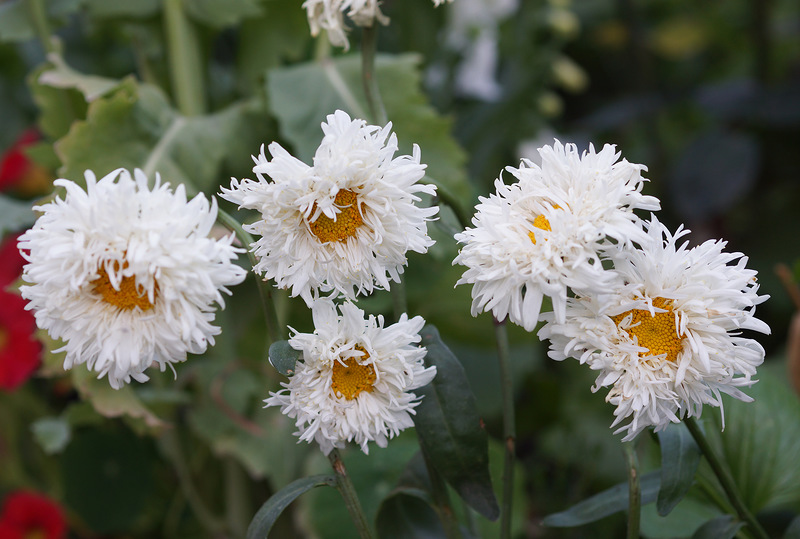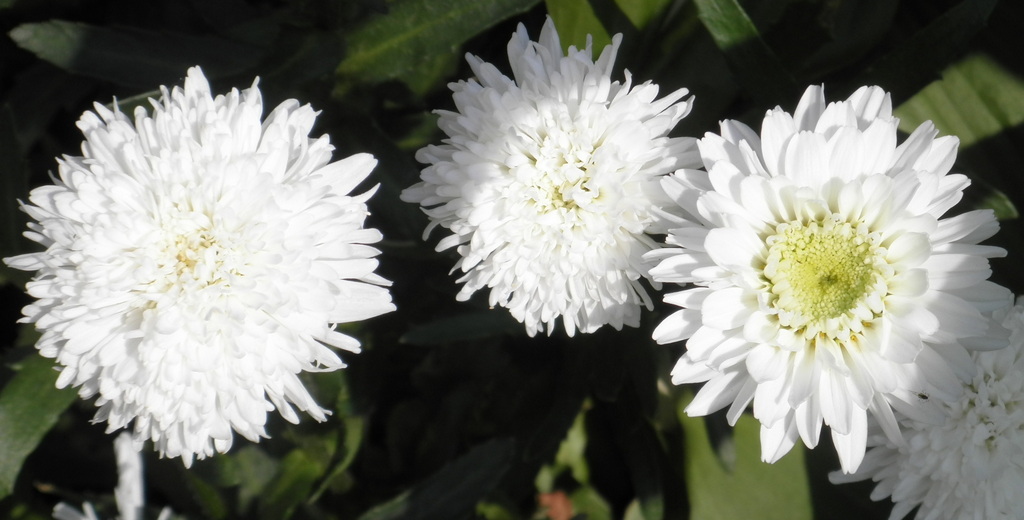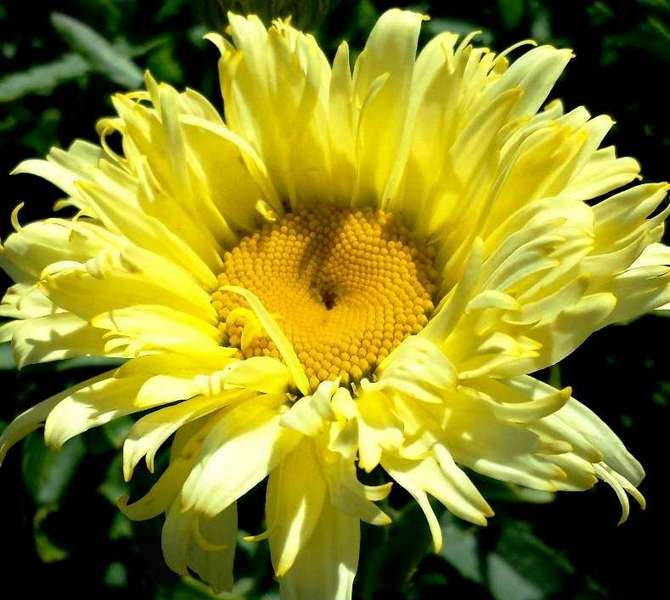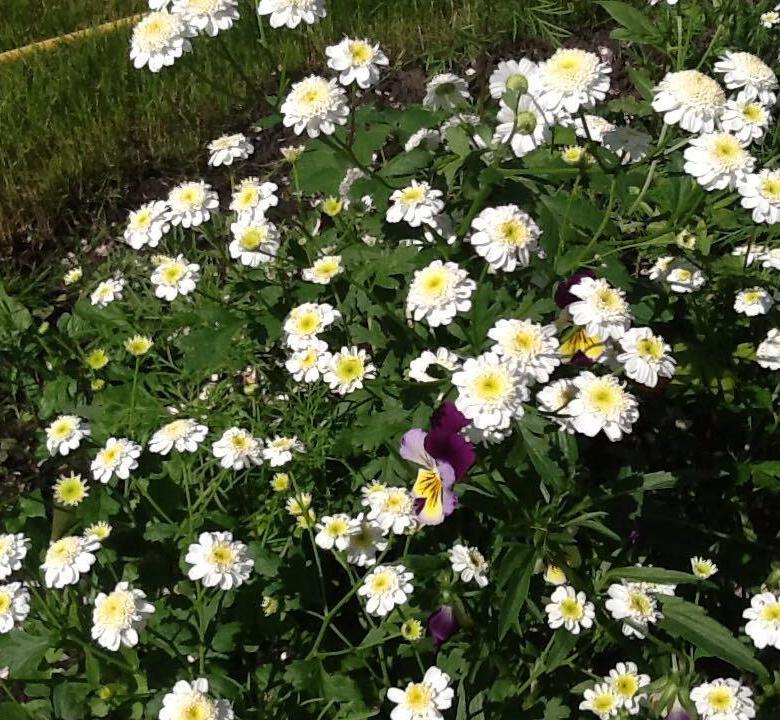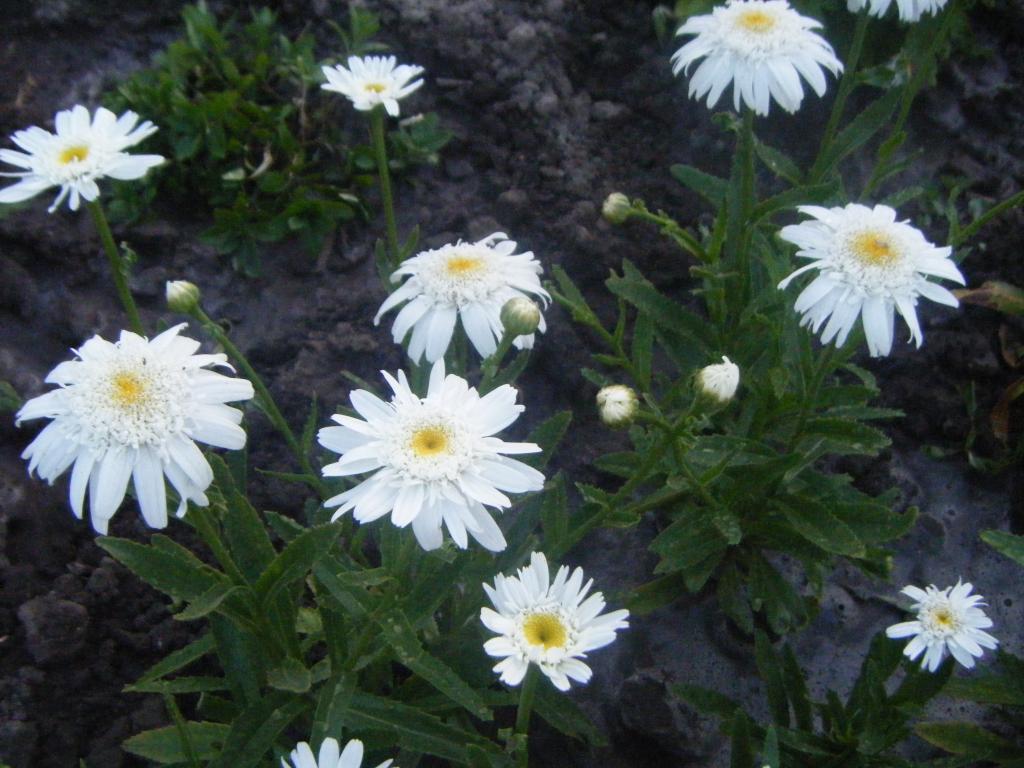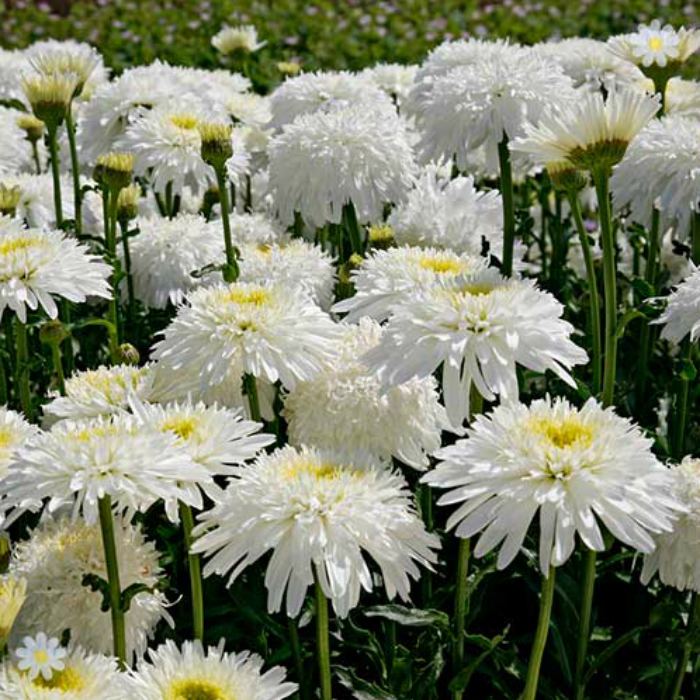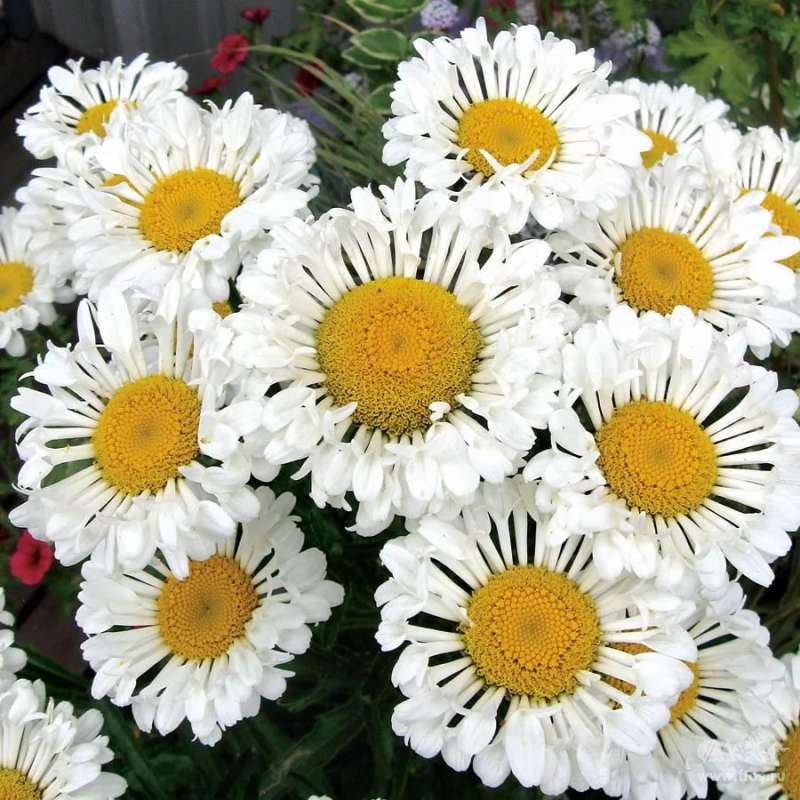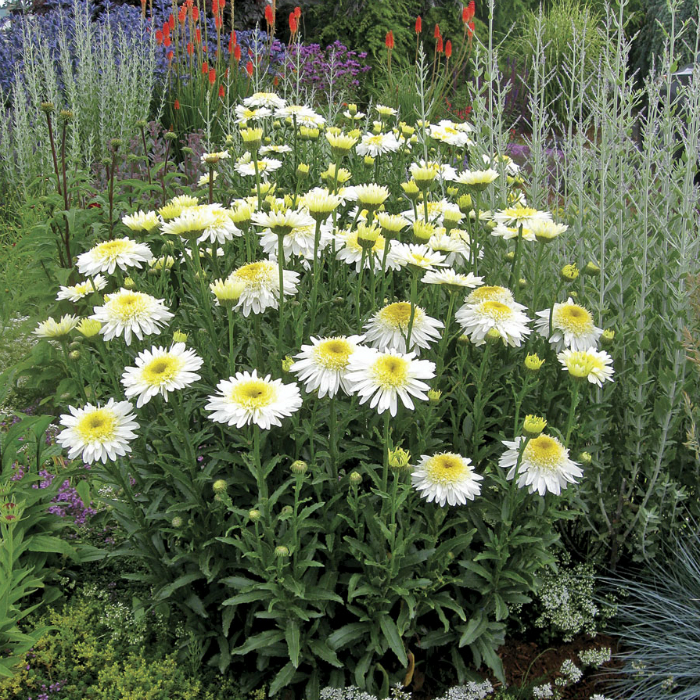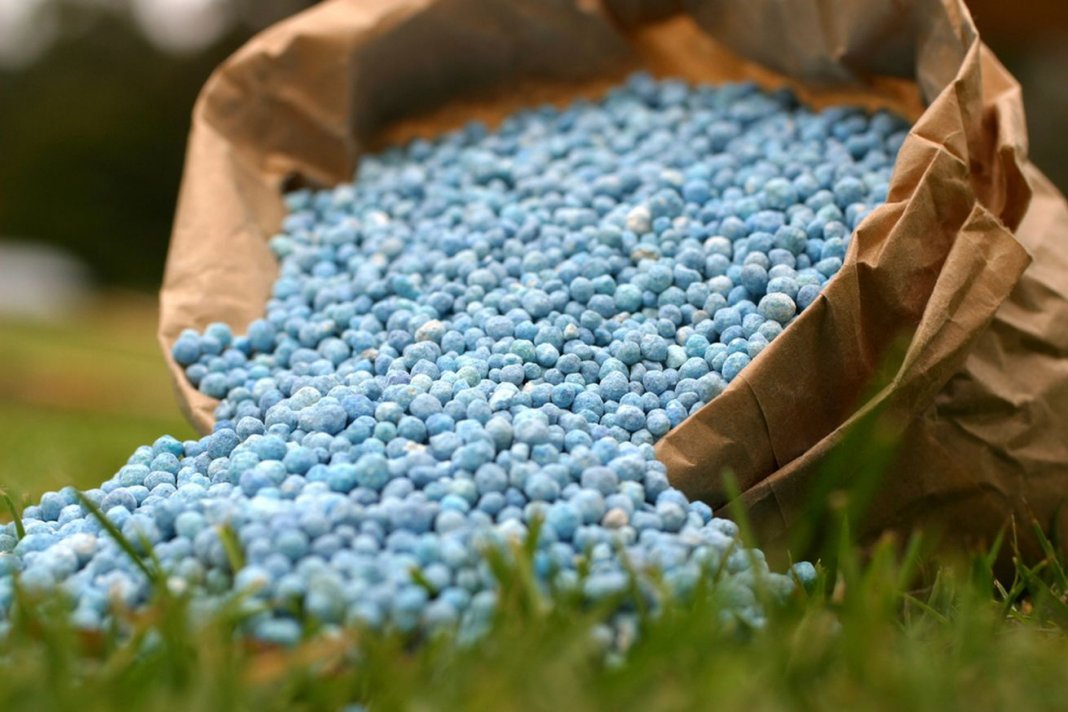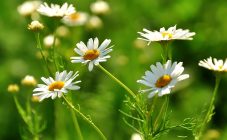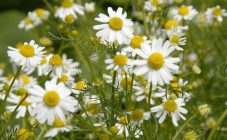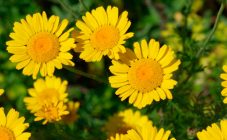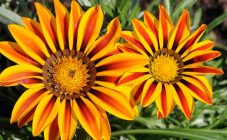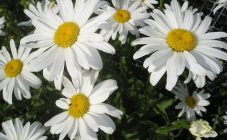Content:
Terry chamomile is a simple but effective plant in any flower bed. Among them there are about 180 varieties. Therefore, in order to understand which of the perennial terry daisies to choose, you need to consider this plant in more detail.
Description of terry chamomile
The herbaceous plant belongs to the Aster family (Asteraceae). Terry chamomile is popularly called a nivyanik. The name is not always correct, since there is a separate variety of terry chamomile - Nivyanik.
Terry chamomile is a decorative perennial with large terry inflorescences.
The stem is thick, resilient and dark green, reaching a length of 30 to 100 cm. The buds are large, dense.
Inflorescence time depends on the variety. On average, it starts in June and ends in October. Inflorescence with a diameter of 8-12 cm.
Terry chamomile flowers are similar to chrysanthemums, but are not chrysanthemums. They are soft or dense to the touch. Although there is information in several sources that the daisy belongs to one of the types of chrysanthemums. The information is not officially confirmed in biological encyclopedias.
Flowers are suitable for bouquets - they retain their freshness for a long time, thin out a pleasant and slightly perceptible aroma, look magnificent and beautiful, especially with a combination of bright accents.
Characteristics of terry chamomile varieties
In an abundance of types of terry chamomile, varieties that have their own individual characteristics are especially popular.
French chamomile
The plant is one of the most winter-hardy among the detachments of the Astrov family.
He loves moist soil, it is planted in open ground. Inflorescence - 11 cm. A distinctive feature - it blooms from May to the onset of frost.
Chamomile Goldfinch
The variety is a golden, double flowers with narrow, dissected petals. Blooms from early June until the first frost (mid-October). The height of the bush is about 50 cm. The lack of light is especially bad. Looks good in group plantings.
Chamomile Nivyanik
Another name is Crazy Daisy chamomile. The stem grows in the region of 70 cm. Crazy Daisy petals are elongated, dissected, soft. The flowers are snow-white, chrysanthemum-like in shape. It grows on loose soils, requires a lot of light and space. Loves feeding. In May, it is recommended to first be planted in a greenhouse, and in June - in open ground.
Chamomile Chrysanthemum
The variety is distinguished by a large single inflorescence. Diameter - 12 cm.The petals are soft to the touch, fragile. The plant is winter hardy, does not require a lot of light.
Chamomile Edelweiss
It is considered the flower of true love and happiness. The scientific name is leontopodium. Endures severe frosts. The flowering period is from early June to late August. The appearance of the inflorescence resembles a lush lion's paw. Loves moist soils, does not require a lot of light.
Chamomile Fiona Goghill
A dense, pompom-like plant. Diameter - 8 cm. Height - about 50 cm. Blooms from early June to August.For the normal development of chamomile, fertile soil is required, well moistened. Loves fertilizers and feeding.
Chamomile Real Knight
The flowers are spoon-shaped (narrow in the middle, expanding towards the edges). Arranged in 2 or 3 rows. The stems are massive, the length is about 40 cm.
They do not differ in winter hardiness, but they have increased resistance to diseases. Blooms in July. Feels good in open sunny areas.
Chamomile Little Lady
Reaches only 15 cm in height.
Chamomile Real Glory
Plant height - 75 cm. The marginal flowers are pure white, tubular - pale yellow. Flowers 11 cm in diameter. Long-term flowering begins in June and lasts until the end of October. Possesses increased resistance to diseases, pests.
Agrotechnics
When choosing this culture for a site, its characteristics should be taken into account. Each section has its own nuances.
Landing
The soil for planting should be loose, moist. The place is sunny, open. A month before planting, you need to plow, fertilize the soil with mineral or organic additives, make small holes for planting.
There are 3 planting methods:
- A reckless way. Seeds are planted in open, prepared ground in late May or early June. Since the seeds are small, they need to be lightly sprinkled with earth. After 2-3 weeks, the first shoots appear. After the appearance of 3-5 leaves on the plants, the chamomiles are planted in 2 at a distance of 40 cm. If the variety is late, then the terry chamomile will bloom in early autumn, early ones - in the second year of life.
- Seedling method. A popular breeding method. In early spring, seeds are sown in deep pots with loose soil and drainage. Beforehand, the ground is slightly moistened. After planting, the seeds are sprayed with water from a spray bottle, covered with foil, and placed on a solar saucer. Planted in May, when the soil has warmed up well to a depth of 40 cm.
- The method of dividing the bush. The division of an adult plant is carried out every 3-4 years. In September or mid-spring, the plant is dug up and divided into 2-3 parts. Divided bushes are planted at a distance of 30-40 cm, watered.
Growing
Terry chamomile constantly needs soil moisture in the summer season. On hot sultry days, watering should be carried out 3-4 times a week, 1 liter per 1 m².
Better to just check when the soil gets dry.
Young plants are fed every 2-3 weeks. To do this, use nitrogen fertilizers, mullein infusion (10 g per 1 m). If the weather is dry, after feeding the chamomile is watered.
Adult terry chamomile (2-3 years of age) is fed with urea once before flowering - 20 g per 1 m. The second time fertilizers are applied if the leaves lose their brightness during flowering, become pale green.
Plants grow and grow quickly, so the bushes are weeded regularly. Loose the soil 2-3 times per season.
Pest and disease control
Some varieties of terry chamomile have unique resistance to diseases, but most of them are susceptible to the following diseases if the conditions of planting and care are not followed:
- Rust - red spots on the leaves.
- Powdery mildew - the plant becomes covered with a white bloom, later turns brown, begins to rot.
- Gray rot - dead leaf tissue is covered with gray-brown fluff.
Treatment:
- All diseased plants are removed.
- Uninfected plantings are treated with fungicides - Topaz, Fundazol.
For treatment of small areas, it is recommended to use a home remedy - laundry soap. A small amount of soap solution is applied to the affected areas at night.If the folk remedy does not help, the plant is treated with insectoacaricides. Karbofos, Actellik will do.
Cutting flowers
Half a month after the beginning of flowering, you can cut the buds into bouquets. This should be done with garden shears.
If the owner plans to plant terry daisies next year, then he leaves 3-4 flowers. After flowering, the baskets dry. When they reach a light brown hue, they are cut off. The seeds are removed, scattered in paper bags.
Preparing for winter
After flowering, before the onset of cold weather, the stems are cut at the root. If the gardener plans to plant chamomile next year, then leave the seeds. For the winter, the roots are placed under the covering material, dry foliage, spruce branches, straw.
Florist tips
The masters of their craft have a couple of tricks that help grow magnificent terry daisies on the site:
- If the soil is sour, then you should not despair. Before planting, it is enough to carry out alkalization, adding 300 g of lime, dolomite flour per 1 m².
- Immediately before planting, fertilizer for flowers is poured into the hole, which can be purchased in specialized stores.
- At the beginning of flowering, for the most lush buds, the plant is fed with a solution of potassium sulfate, superphosphate, 20 g per 10 liters.
- To prolong the life of cut terry daisies for sale, experienced gardeners feed them with baking soda (3/4 teaspoon is diluted in a liter of water). This will help get rid of bacteria and maintain a presentable appearance.
- For plentiful germination, soil is mulched with dry grass and sawdust.
- In one place, the daisy grows no more than 7-8 years. Strong overgrowth harms the plant's immunity and flower quality. Therefore, every 2-3 years it is necessary to rejuvenate the terry chamomile by dividing the bushes.
Terry daisies are flowers that look fresh in bouquets, retaining their original appearance and pleasant aroma for a long time. Using the information from this article, even a novice gardener will be able to get many beautiful and lush buds of this plant on his site.
